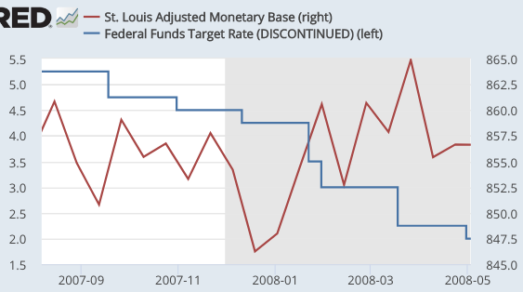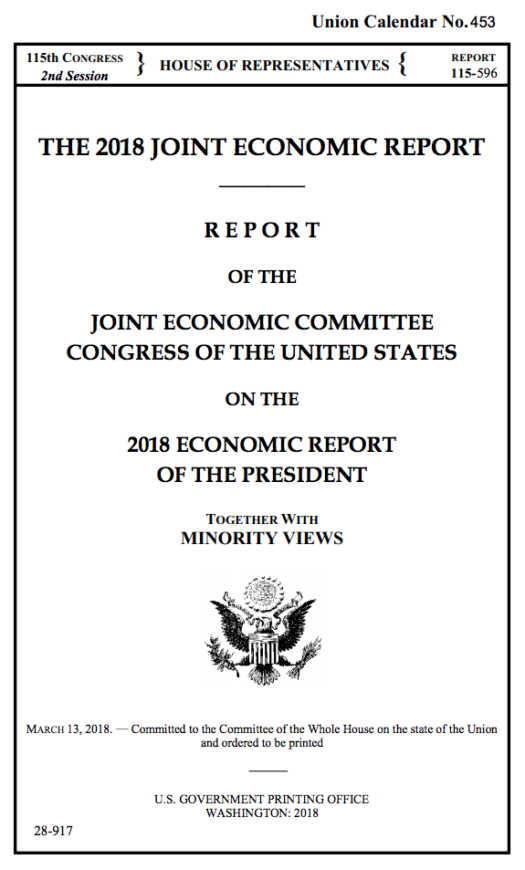Odds and ends
I have a short piece over at CapX, where I make the case for NGDP targeting. (You can think of it as complementing my recent longer piece on the subject.) Here’s how I conclude:
Economists are beginning to understand that NGDP is the variable we should actually be concerned about. Instead of worrying about what might happen to inflation under NGDP targeting, we should consider what happens to NGDP if we insist on targeting inflation.
I leave for Japan tomorrow, so I won’t do much blogging in April. And most of what I do write will be over at Econlog. Here are a few interesting pieces I recently came across, starting with an analysis of the new GOP budget:
It fully funds Planned Parenthood. It increases outlays for Pell Grants and Head Start, and boosts funding for the Department of Labor and the Department of Education not only above the requests Trump had made, but above the levels in Obama’s last budget. It fails to deregulate the private health insurance market or to reform federal permitting rules on construction projects. Not a single agency was eliminated, though Trump’s original budget proposal had called for 18 to be scrapped. It makes no changes to entitlement programs, and oh, here’s something interesting, it actually forbids construction of a border wall in the Santa Ana National Wildlife Refuge in the Rio Grande Valley — the very place Trump supposedly wanted to begin construction.
This article suggests that refugees are good for America:
This year’s refugee quota, 45,000, is the lowest in three decades, and is not expected to be met. Mr Trump also excluded a lot of wretched people from it, by temporarily placing additional restrictions on anyone from a secret list of 11 countries, which is said to include South Sudan, as well as Syria and Iraq. A low-cost nativist signal to his supporters, these are the biggest changes Mr Trump has made to America’s immigration regime. They are also counter-productive, as well as cruel, a typical case of nativists mistaking American strengths for weakness.
The argument against refugees, which Republican governors in Texas and Michigan were making even before Mr Trump’s election, is that they are a financial burden and security threat. Both charges are unfounded. For though it is true that refugees represent a bigger upfront cost than other migrants—America spends between $10,000 and $20,000 resettling each one—they repay that in spades. A decade after their arrival, the average income of a refugee family is close to the American average. Mr Makender has paid over $100,000 in taxes. Americans can also relax about their odds of being killed by a refugee. None of the 3m-odd fugitives America has taken since 1980 has been involved in a fatal terrorist attack. That reflects the rigour of America’s vetting, refugees’ hunger for advancement—and America’s ability to feed it.
This article on teenagers in Russia (called “Puteens”) makes me more optimistic:
The internet unites the human race
This heightened sense of the world beyond their borders seems to make the Puteens more receptive towards it. The dynamic of constant confrontation with the West holds less appeal for them. Russia’s youngest adult cohort is more likely to have positive views of America and the European Union, and less likely to believe that Russia has enemies. (Their peers in the West also view Russia more favourably than older generations do.) They trust information from friends and relatives, and increasingly eschew the aggressive state-controlled news on television. Over 70% of 18- to 24-year-olds get their news online, compared with just 9% of those over 55; more than 90% of over-40s still rely on television. “They try to convince us that Americans all hate us; that Americans think Russia is a place full of evil people, bears on the streets and vodka,” says Lera Zinchenko, an aspiring actress from the Moscow suburbs. “I don’t think they hate us. I follow a few people on Instagram who travel all over the world, and there’s one girl who was in America and said people were super nice to her.”
This article suggests that China is becoming more like the West:
Start with administrative litigation, which usually involves private citizens suing government officials. Last year courts agreed to hear 330,000 such cases, more than double the total in 2013—the first full year of Mr Xi’s rule (see chart). Many of these involve disputes over land and housing, the most frequent sources of conflict between ordinary people and the state. Other common cases relate to pension benefits, compensation for workplace injuries and traffic tickets. Benjamin Liebman of Columbia Law School says that suing the government over such matters is becoming routine in China.
There have also been notable improvements in the arena of commercial law. Last year Chinese courts began hearings in 152,000 intellectual-property disputes, up nearly tenfold over the past decade. The explosive growth in IP cases has been fuelled by the growing litigiousness of domestic companies, which have more to protect as they become more innovative. But foreign companies are also benefiting. In August a court ordered three Chinese firms to pay 10m yuan ($1.5m) in damages to New Balance, an American footwear company. It was one of the largest trademark-related awards ever made by a Chinese court.
And don’t be overly depressed by the rise of right-wing authoritarianism. At the global level, things are still getting much better. This article discusses the dramatic rise in fish farming in Bangladesh, as well as fast rising chicken production in Nigeria. The bottom line is that the great mass of humanity is seeing a dramatic increase in living standards:
However much farmers struggle with the consequences of their success, it is a far nicer problem than the one they used to grapple with. Walking down a market street, Mr Haque dips his hand into a sack of maize and a sack of rice. The grains will be bought by farmers, who will grind them into pellets for fish and cattle. “Twenty-five years ago, people were starving for want of this,” he says, marvelling. “Now we feed it to animals.”
If you are depressed about the world, that’s a reflection of you, not the world.



